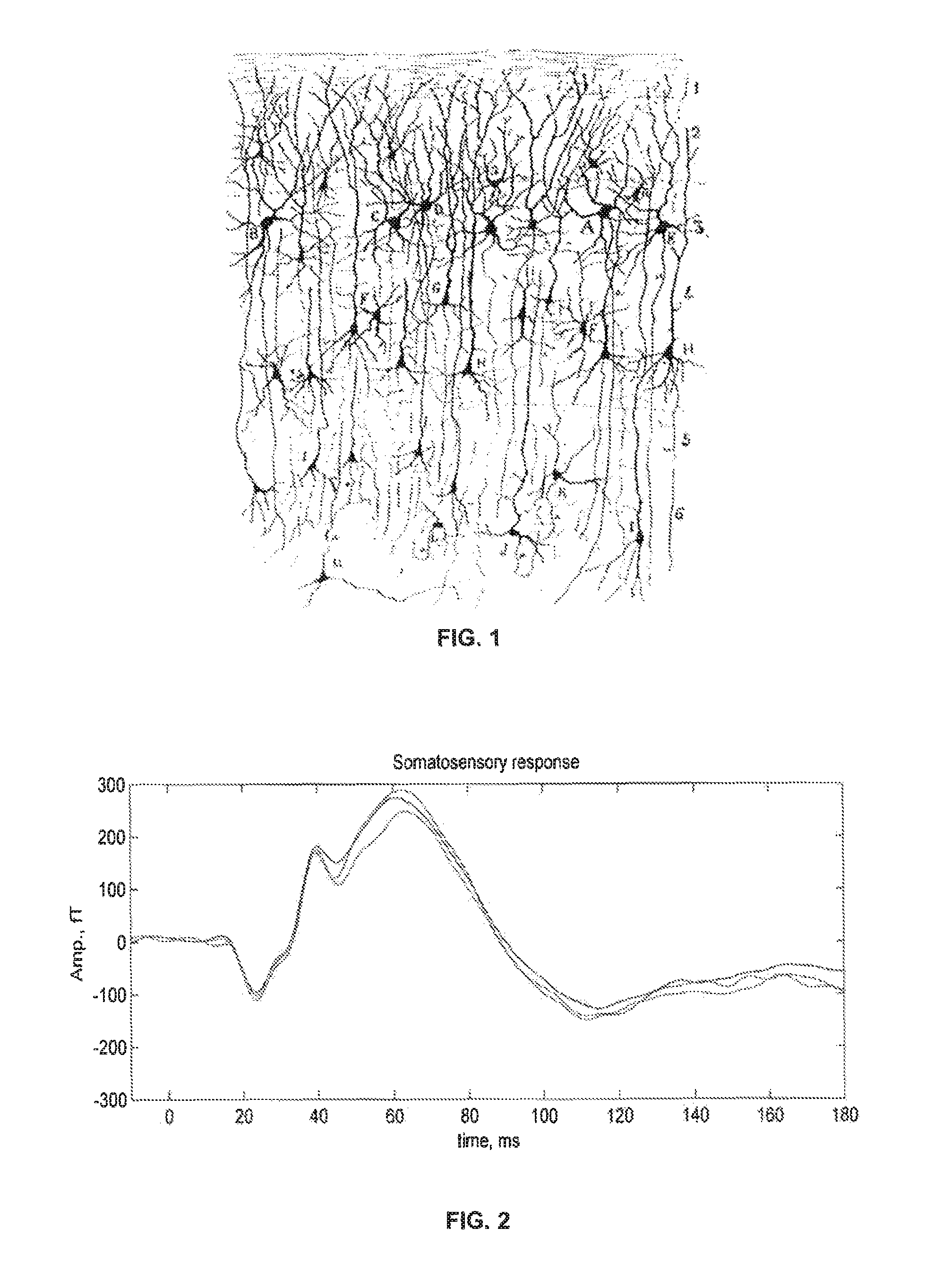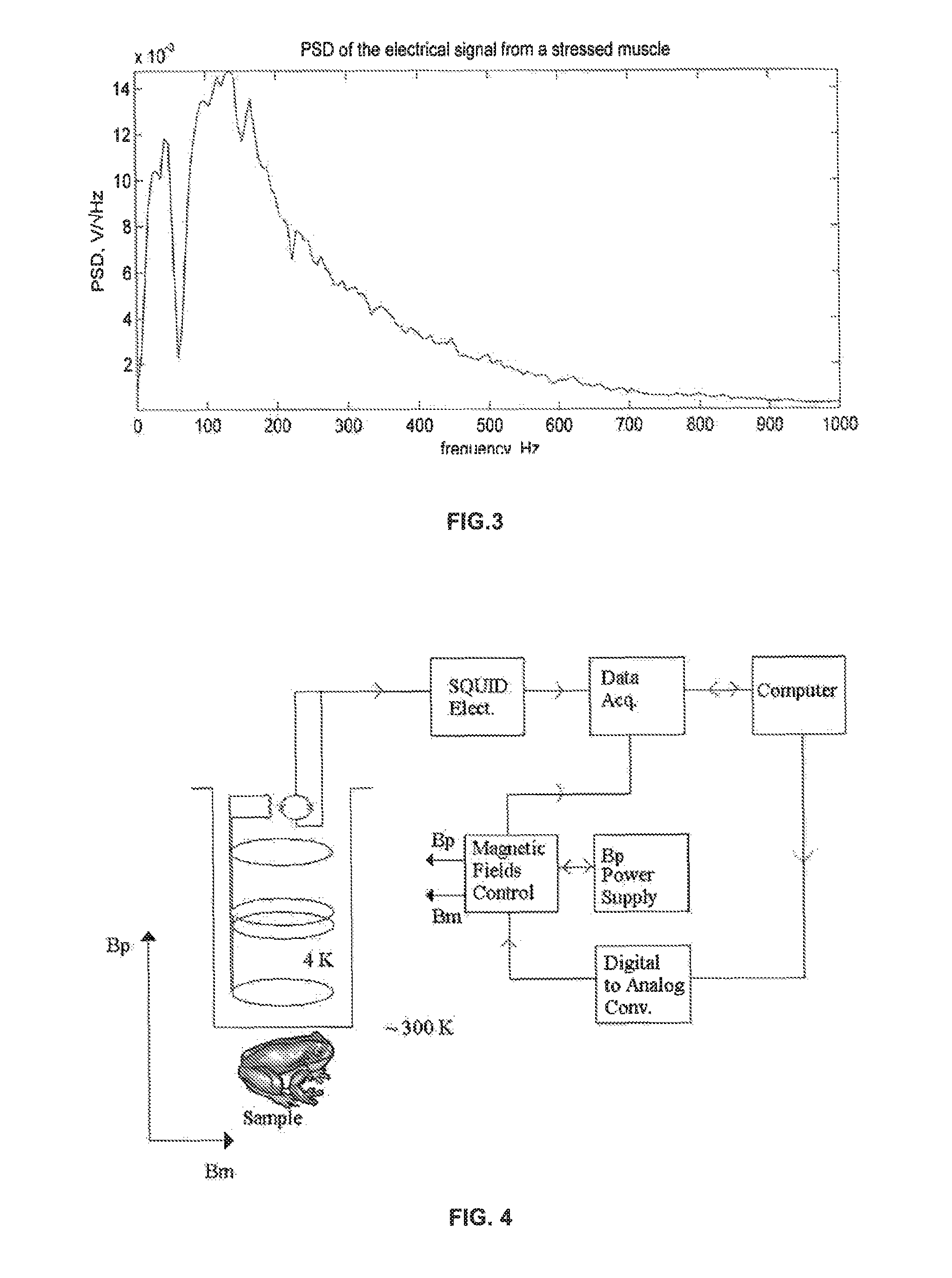Direct imaging of neural currents using ultra-low field magnetic resonance techniques
a magnetic resonance and ultra-low field technology, applied in the field of medical and biological imaging systems and methodologies, can solve the problems of ill-posed inverse problem of electromagnetism, poor temporal resolution of the applicator, and inability to directly measure neural activity,
- Summary
- Abstract
- Description
- Claims
- Application Information
AI Technical Summary
Benefits of technology
Problems solved by technology
Method used
Image
Examples
Embodiment Construction
[0044]Electric currents associated with neuronal activity generate magnetic fields that affect the precession of the spins in cortical tissue. This effect can be used to detect (and image) neuronal activity. The currents result from a large number of fast microscopic ion transport processes such as postsynaptic currents and action potential currents from many individual neurons comprising cortical tissue. FIG. 1 illustrates the complex spatial organization of neurons in cortex. The average duration of a composite postsynaptic potential is on the order of 10 ms; the average duration of an action potential is on the order of 1 ms. From a distance, postsynaptic currents appear to be a current dipole with average strength of roughly 20 fA-m per neuron. In contrast, currents associated with action potentials can be approximated by two oppositely oriented current dipoles with a separation of about 1 mm and magnitude of each dipole about 100 fA-m. Since the two dipoles are in opposite dire...
PUM
 Login to View More
Login to View More Abstract
Description
Claims
Application Information
 Login to View More
Login to View More - R&D
- Intellectual Property
- Life Sciences
- Materials
- Tech Scout
- Unparalleled Data Quality
- Higher Quality Content
- 60% Fewer Hallucinations
Browse by: Latest US Patents, China's latest patents, Technical Efficacy Thesaurus, Application Domain, Technology Topic, Popular Technical Reports.
© 2025 PatSnap. All rights reserved.Legal|Privacy policy|Modern Slavery Act Transparency Statement|Sitemap|About US| Contact US: help@patsnap.com



